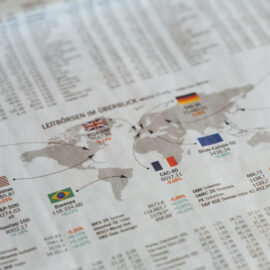

This article is an excerpt from the Shortform book guide to "The Wealth of Nations" by Adam Smith. Shortform has the world's best summaries and analyses of books you should be reading.
Like this article? Sign up for a free trial here.
What does it mean to get a “good deal” on a product? What’s the natural price of a good?
When supply and demand are in equilibrium, goods will be sold for their natural price. Adam Smith explains that the natural price is the cost of bringing a good to market. He discusses this concept in his classic work The Wealth of Nations.
Read more to understand natural price and the three primary costs that determine it.
The Natural Price of Goods
A good’s natural price, Adam Smith explains, includes the costs of production along with the typical profit margins for each step of the process. The natural price is like the center of gravity around which the market prices fluctuate. If a customer gets a “good” or “bad” deal on a purchase, it is a good or bad deal in relation to the natural price.
Smith explains that the natural price of a good is determined by the costs of its production. A business can continue bringing goods to market only if it’s able to sell them for more than its cost of production. Otherwise, they’ll simply go bankrupt. Therefore, the natural price of a good will change in accordance with changes in any of the costs of production. Smith identifies three main costs that determine a good’s natural price: wages, rent, and capital.
Cost #1: Wages and Labor Markets
The price of any good includes the wages of the workers who produced it. Businesses must pay their workers, who are also pursuing their own self-interest and therefore wouldn’t work for free. Thus, the wages of workers involved in every step of the process are going to be included in the natural price. Smith identifies two factors that determine the cost of wages.
1) Labor Markets
The principle of individual self-interest also governs labor markets, much like it governs markets for goods. Labor markets consist of a seller (the worker), trying to sell their labor for the highest price, and a buyer (the employer), trying to buy labor for the lowest price. The same principles of supply and demand apply.
Smith asserts that rapid economic growth will raise wages because employers can afford to hire more workers. However, a recession will lower wages.
2) Workers’ Living Conditions
Wages must be enough so that workers can furnish themselves with food and housing. Furthermore, there is greater regional variety in the rate of wages than there is for the cost of goods. Workers are often unable or unwilling to move away from the area where they live or have close social connections. Therefore, workers tend to accept the prevailing local wage.
Cost #2: The Rent of Land
Smith states that the second factor of the natural price of a good is the rent of land. Every industry has to take place somewhere, and, if that land is privately owned, then the good’s price will include rent to the land’s owner. This is especially true in land-intensive industries like farming, logging, or stone quarrying.
However, landlords still must operate with some constraints. If they charge so much as to bankrupt the businesses, then the business on their land will cease and the landlord won’t be able to charge any more rent.
(Shortform note: The rise of remote work has changed the nature of commercial rents. Office spaces have lost much of their value, and commentators have floated a variety of proposals for unused office space. However, some argue that remote work has simply shifted real estate costs from companies to workers, as remote workers tend to spend more on housing than non-remote workers.)
Cost #3: Capital
Smith identifies the cost of capital—all of the equipment, materials, and money (outside of wages and rent) required to run a business—as the third factor that influences the natural price of a good. He explains that capital is typically lent to businesses for a profit. Therefore, the natural price of the good will include not only the cost of the capital itself but also the profit of the investor.
Smith identifies three key factors that influence the markets for capital.
1) Risk to the Investor
The cost capital adds to the natural price will change from industry to industry depending on the risk to the investor. Smith states that, if a business venture has a significant chance of failure—for example, a ship getting lost at sea—then the investors will need a rate of profit on their capital sufficient to recoup potential losses. This will drive up the natural price of capital for goods whose production requires a risk of financial loss.
2) Profit on Capital
The cost of capital is also going to be influenced by the profit gained by the investor who lends out their capital. Smith states that capital lenders are also guided by their self-interest and invest to gain the most return. However, capital lenders are also competing with each other in a capital market—as such, their ability to profit will be determined by the ratio of supply (capital to lend) and demand (businesses borrowing capital).
3) Changes in Supply Chains
Recall that capital includes all of the materials and equipment required to run a business. These materials and equipment are also goods that must be purchased at market value and follow their own ratio of supply and demand. Therefore, any change in the price of supplies or equipment will find its way into the natural price of goods. For example, a company making light bulbs would be impacted by changes to the price of glass, metal filaments, or argon gas.

———End of Preview———
Like what you just read? Read the rest of the world's best book summary and analysis of Adam Smith's "The Wealth of Nations" at Shortform.
Here's what you'll find in our full The Wealth of Nations summary:
- The 1776 classic that set the groundwork for the field of economics
- Adam Smith's ideas about markets, international trade, and government
- How governments can accidentally encourage smuggling






